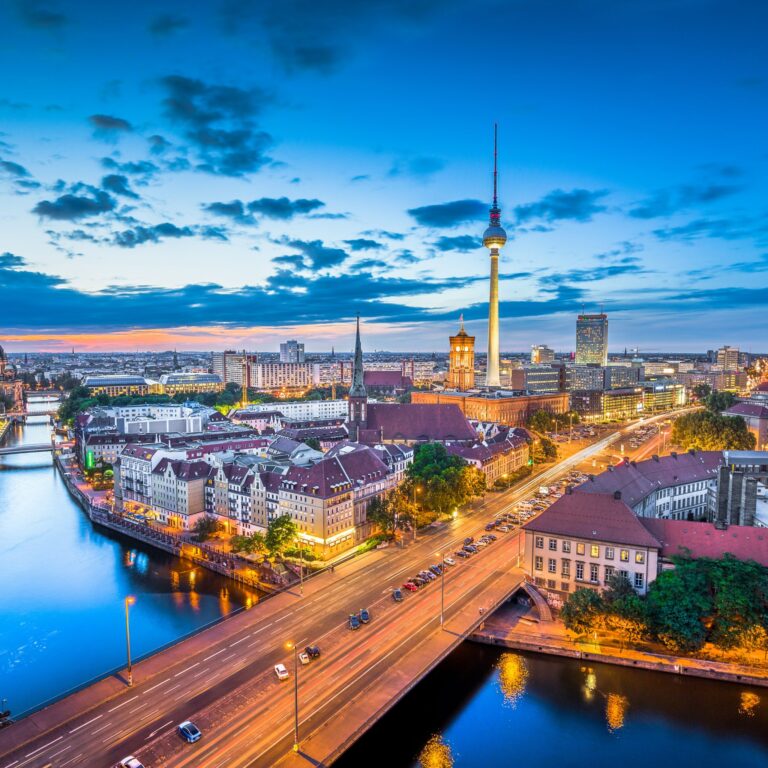Deutsche Telekom recently announced that its 5G network already reaches 94% of Germany’s population
During 2022, Germany’s largest carriers are focused on expanding their 5G networks, with some already serving more than 80% of the country’s population.
German carrier Deutsche Telekom recently announced that its 5G network has already reached 94% of the country’s population. The European carrier said it expects its 5G technology to reach 99% of Germany’s population by 2025.
The carrier also highlighted that more than 80,000 antennas are currently transmitting 5G, of which approximately 8,000 antennas are scheduled to provide 5G in the 3.6GHz band by the end of 2022.
In June, Deutsche Telekom announced that it would use spectrum in the 700MHz range for the first time to offer 5G services. The European carrier said the use of the 700 MHz band will improve mobile coverage in rural areas across Germany.
This new addition allows carriers to offer 5G services over three different frequencies. In addition to the 700 MHz frequency, there are two radio bands: 2.1 GHz and 3.6 GHz.
The company began rolling out its 5G network in a limited number of cities across Germany in early July 2019.
Meanwhile, Vodafone Germany said its 5G network already serves 65 million people across Germany, representing almost 80% of Germany’s population.
Since the beginning of 2022, Vodafone engineers have installed more than 16,000 additional antennas across 5,450 5G sites. In total, Vodafone has already equipped 36,000 antennas with 5G.
The company also noted that its 5G standalone network is currently available to around 20 million people across Germany. Vodafone has previously said that 5G SA technology will be covered nationwide by 2025. The German telecommunications company had already deployed more than 3,000 base stations for the provision of 5G SA services.
According to the carrier, more than 227 new base stations to provide 5G SA services began operating across the country in November and December alone.
Vodafone Germany launched 5G Standalone last year
Last year, Vodafone Germany launched its 5G Standalone (SA) network in partnership with Ericsson, Nokia, Qualcomm and Oppo.
In its 5G expansion, Vodafone is leveraging frequencies in the 3.6 GHz, 1.8 GHz and 700 MHz bands in metropolitan areas, residential and suburban areas, and rural areas across Germany.
Additionally, Telefonica Deutschland/O2, owned by Spanish telecommunications company Telefonica, said its 5G network operates more than 18,000 antennas in the country.
This telecommunications infrastructure has made it possible to provide 5G services to 75% of Germany’s population, the carrier said. With this expansion progress, the telecommunications provider has surpassed its original goal of covering half of the population with his 5G technology by the end of this year.
Telefonica Deutschland/O2 announced that by the end of July, it had already deployed nearly 6,000 5G antennas on the 3.6 GHz frequency. The telco said the 3.6 GHz frequency is primarily used in densely populated areas. Cities with the highest number of 3.6 GHz stations include Berlin, Munich, Hamburg, and Cologne.
The company also said it is currently focused on delivering 5G in rural areas across Germany via spectrum in the 700MHz band.
The company also said it expects to cover the entire population of the country with 5G by the end of 2025.
Telefonica Deutschland said it is technically ready to roll out a nationwide 5G standalone network, but that 5G standalone offers real added value to customers and that there are enough devices on the market with 5G SA. The infrastructure will be fully activated as soon as it supports it.
Meanwhile, German carrier 1&1 previously announced that it plans to launch 5G mobile services in the summer of 2023. Additionally, this telecommunications company initially plans to offer he 5G services through Fixed Wireless Access (FWA) technology.
In August, 1&1 completed its first live test on its new 5G network. 1&1 announced that in testing, it achieved speeds of over 1Gbps and stable data transfer of approximately 8 terabytes per customer within 24 hours.
1&1 has selected Japan’s Rakuten Group to design, build and operate a fully virtualized mobile network based on O-RAN technology.


